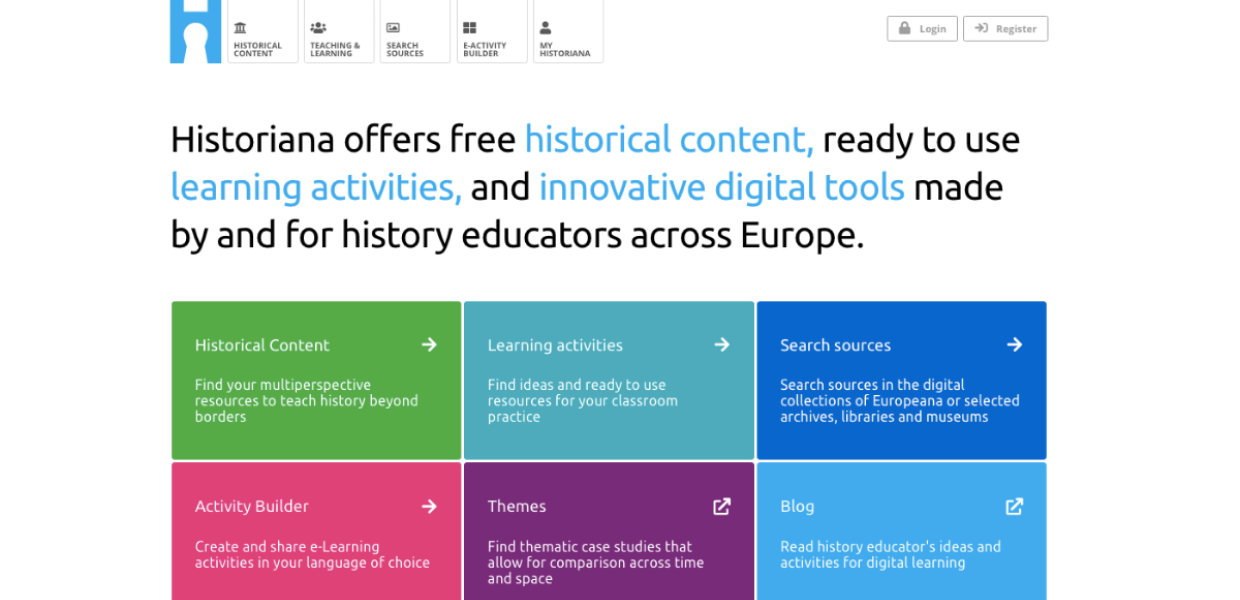About the platform
Historiana is an open, online resource for educators in Europe (and beyond) who are interested in using digital technologies to teach inclusive history and citizenship in blended formats. It offers free historical content, ready to use learning activities, and innovative digital tools made by history educators across Europe. Historiana’s development is informed by the EuroClio manifesto and it seeks to provide material that is complex and multi-perspective in order to promote critical thinking. It offers a number of tools and sections to support educators in schools and cultural heritage institutions.
EuroClio’s network has compiled a document that mentions best practices for each of the tools and helps anyone creating an eLearning activity to use the tools to their full potential - explore it on their Historiana webpage under 'Support page for eTools.'
Benefits of the platform
For cultural heritage institutions
Historiana can be used by any cultural heritage institution with content in Europeana to enhance their online offer and engage with schools and students in their national languages. Cultural heritage institutions can:
Create a page on Historiana where they can curate collections as sources and eLearning activities. Explore Historiana’s current partners.
Create and publish their own eLearning Activities and Source Collections in the language of their choice.
Reach history and citizenship educators who are looking for resources they can use, and so encourage the reuse of their collections for education.
Cultural heritage institutes whose collections are available on Europeana can make these collections searchable on Historiana. Find out more about how to open up digital collections for education.
If you are interested in the partner pages and wish to learn how to develop your own content on Historiana, contact Lorraine Besnier at [email protected].
For educators
The platform, and the tools it offers, fosters innovative teaching by encouraging students to directly interact with historical sources.
The Historical Content section offers openly licensed, curated material, and sources from Europeana from hundreds of cultural heritage institutions, which can be used in education. These are chosen carefully to present a variety of perspectives and to engage students of all abilities.
The Teaching and Learning section explains and exemplifies historical thinking, teaching methods and teaching challenges with (e)learning activities.
The eActivity builder allows anyone to create their own online learning activity (eLearning activity). It has been designed to promote historical thinking and is easy to use. It enables educators to develop questions, set up learning using digital tools designed by history teachers, and to get students to respond in a way that educators can assess. Explore a Youtube playlist with Historiana tutorials.
The platform is constantly updated with new features, curricula topics in the form of source collections and new ready-made learning activities.
Use the platform
You can visit the Historiana website to make use of all the tools and content. Additionally, you can find training material, video tutorials and webinars about how to use the platform on the EuroClio website. To find out more about working with Historiana, contact Lorraine Besnier at [email protected].

